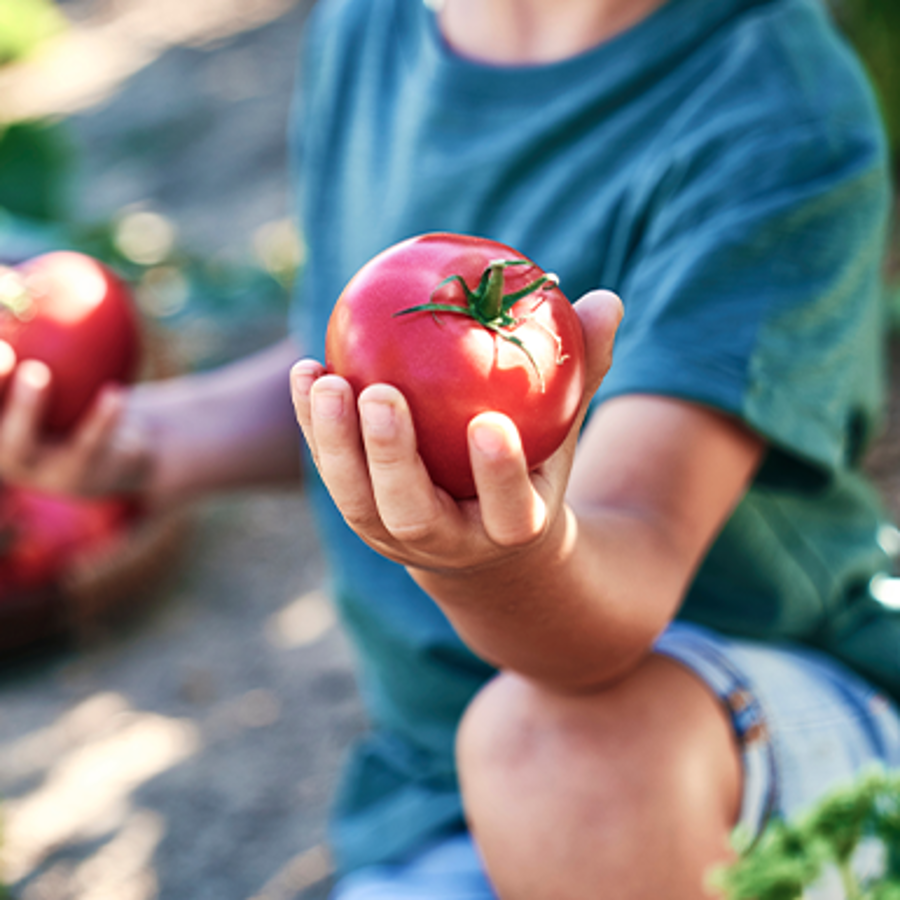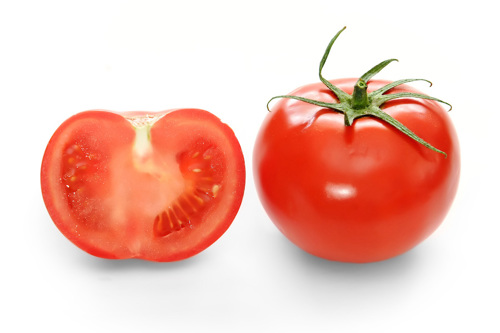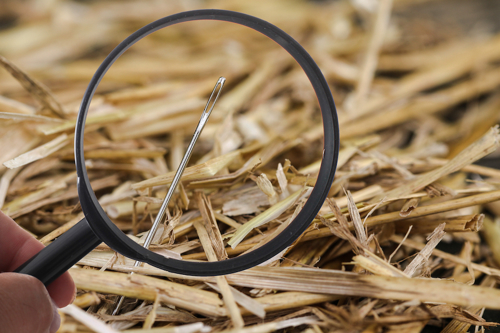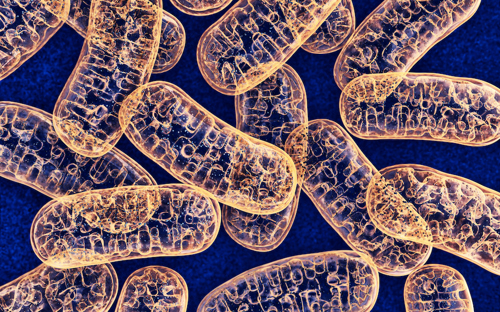
Can human DNA work in a tomato cell?
October 28, 2010

- Related Topics:
- Evolution,
- DNA basics,
- Quirky questions
A curious adult from India asks:
"Are cells designed to only work with specific DNA types? For example, can human DNA work in a tomato cell? If not, why not?"
What an interesting question. There are a number of different answers depending on what you mean by human DNA.
If you put all of a human's DNA into a plant cell, it wouldn't work. And a single human gene wouldn't work either. But if you connected part of a human gene to part of a plant gene, then you might get a tomato cell to use this hybrid creation.
One of the big reasons why plant cells have such a hard time with human DNA is that they can't pick the genes out of it. If the plant cells could find the genes, then they could use them. But they can't.
Now, even if a plant cell could find and use all the human genes in human DNA, this plant/human cell would probably still die. The human DNA would almost certainly not be able to support parts of the plant cell like the mitochondria or chloroplast. And cells need these organelles to live.
These are the major reasons why human DNA wouldn't work in a tomato cell. There are also other, more subtle reasons too but I won't have time to go into those.
What I will have time for is to go into a bit more detail about the two main reasons human DNA won't work in a tomato (or a frog or a chicken for that matter). To do this, we'll first need to go over a bit about what genes are. And how they work.

Genes are Instructions for Proteins
As you probably already know, human DNA has the instructions for making a human. And tomato DNA has the instructions for making a tomato. A lot of these instructions are found in the form of genes.
Genes are long chunks of DNA that have the instructions for doing one specific thing in a cell. You are the end result of 25,000 or so different genes all working together.
Each gene actually has the instructions for making a certain protein. It is this protein that goes on to do something specific in a cell. To summarize, genes make proteins and proteins do the work.The instructions in the gene for making the protein are written in a genetic code. Pretty much all living things use nearly the same code. So this part of a gene from humans can be read in plants, animals, whatever. But most of these organisms couldn't find this part of a gene in human DNA.

Identifying a Gene
Most of a plant's or a human's DNA isn't made up of genes at all. This means a cell has to be able to pick out which bits of DNA to read and make into proteins.
If a cell picks the wrong chunk of DNA, it'll waste its time and energy making a bit of gibberish. Too much gibberish and the cell will die.
So it is very important for a cell to be able to find the right piece of DNA to read. It is also very important that a cell use the right protein at the right time.
If you were a tomato, you wouldn't want to turn on a leaf gene in your roots. And if you're a person, you don't want hair growing out of your lungs.
Cells have set up very complicated systems to control how, when, and where genes are read. And the systems from different beasts have their own unique features. The further away two living things are from each other in evolutionary terms, the less likely they are to recognize each other's genes.
A plant has a very different system for identifying and controlling a gene compared to an animal. And so does a bacterium, a mushroom, or a Paramecium.
Human DNA in Tomatoes
What this means is that a plant cell can't tell where a human gene starts and vice versa. This is why if you put a human gene into a tomato cell, it is very unlikely to work.
Obviously then, if you replaced all of a tomato's DNA with a human's, the tomato cell wouldn't be able to tell where the genes were either. The cell would eventually wither and die.
But if you put the instructions for a human protein in the midst of plant gene recognition DNA, then the human protein would get made. By mixing and matching DNAs, you can get a tomato to make a human protein.
So that's your answer for tomato and human DNA. But a human and a tomato cell are pretty far apart. What about human DNA in a frog, moose, or chicken cell? Or tomato DNA in a redwood or a wheat plant?
These are unlikely to work either. A big reason why is that human DNA can't support some of the frog or chicken cellular machinery.

Chloroplasts and Mitochondria
Most of a cell's DNA is squirreled away in a compartment called the nucleus. A bit of your DNA is also found in something called a mitochondrion. Mitochondria are where a cell gets most of its energy.
If current theories hold true, mitochondria used to be free living. This is why they have their own DNA.
Around a billion or so years ago, our ancestors engulfed these free living creatures and put them to work. Thus was born one of the most successful duos ever -- the eukaryote.
Over time, the mitochondrial DNA has become smaller and smaller. Now this "lost" DNA hasn't disappeared". mitochondrion still needs it in order to function. This DNA has instead migrated out of the mitochondria and into the cell nucleus where it still lives today.
This matters for our discussion because the mitochondria of different living things have had different bits of their DNA migrate. In other words, the mitochondria of each kind of organism have a different subset of genes. The nuclear DNA of a human almost certainly does not have what a frog mitochondrion has lost to a frog nucleus over time.
So even if a frog cell could read the human DNA, the hybrid cell would still die. The frog mitochondria would stop working because it is missing key mitochondrial genes that the human DNA does not have. No mitochondria = no energy = death.
The same sort of thing works for chloroplasts too. Chloroplasts are how plants use sunlight to make sugar for energy.
Chloroplasts have their own DNA because they used to be free living too. And their DNA has been whittled down differently in different plants just like in mitochondria.
Tomato DNA could not support wheat mitochondria or chloroplasts. The tomato/wheat cell would die from lack of energy just like the frog/human cell.
These are the major reasons why human DNA wouldn't be able to run a tomato or frog cell. And, on a side note, why genetic engineering is so tricky!
You can't just put a human gene into a tomato--you need to tinker with it to get the gene to work there. The same thing goes for an insulin gene in bacteria or a human gene in a cow.

Author: Dr. D. Barry Starr
Barry served as The Tech Geneticist from 2002-2018. He founded Ask-a-Geneticist, answered thousands of questions submitted by people from all around the world, and oversaw and edited all articles published during his tenure. AAG is part of the Stanford at The Tech program, which brings Stanford scientists to The Tech to answer questions for this site, as well as to run science activities with visitors at The Tech Interactive in downtown San Jose.
 Skip Navigation
Skip Navigation
